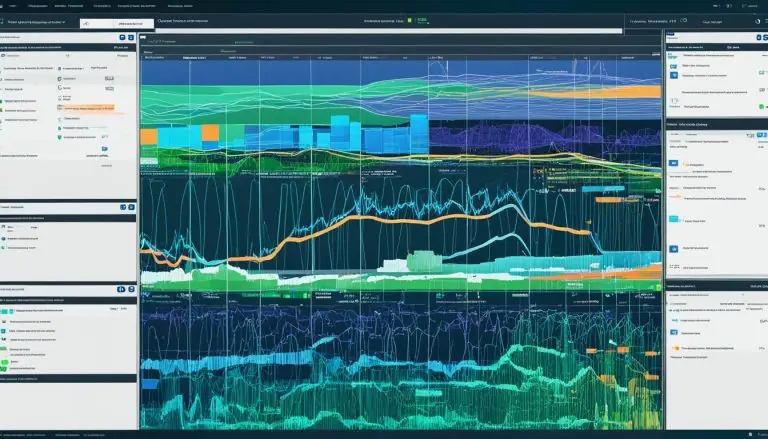What Is Open Source Software And How Can It Benefit You?

Ever been stumped by restrictive software limitations or steep licensing fees? It’s an all too common frustration. Fear not, as we’ve swapped those knots for know-how in navigating towards a solution: open-source software. In this blog post we’ll explain what Open Source Software is and how you and even your business can benefit from opensource software products.
Our guide unfurls the what, why and how of this game-changing approach to technology, spotlighting benefits from significant cost savings to unparalleled flexibility. Ready to lift the lid on endless possibilities and make your computer tasks run smoother than ever before? Stick around – you’re in for a ride!
Key Takeaways
- Open source software is a program with visible code that anyone can change.
- Many tools we use every day like Linux and WordPress are open source.
- This kind of program lets us see, share and shape the tool as we want.
- Open source often costs less than other programs. It also works well because many people look at it.
- Big groups of users help make open – source better for all to use.
- You need good plans to get the most from an open – source program.
What is Open Source Software
 Open source software is a type of computer software that allows everyone access to the source code. It’s built on collaboration and transparency, giving users complete freedom to use, study, distribute, and modify it as they see fit.
Open source software is a type of computer software that allows everyone access to the source code. It’s built on collaboration and transparency, giving users complete freedom to use, study, distribute, and modify it as they see fit.
Examples include popular programs like Linux and Firefox. Its chief characteristics are flexibility and innovation.
Definition
Open source software is a special kind of program. A license gives users certain rights to it. You have the right to use, study, change, and share this software. This is different from many other programs.
The source code of open-source software makes it unique. It’s open for all programmers to see and change. Anyone can view, modify or update this type of software because its code is out in the open.
This openness gives us more freedom and flexibility with the program.
Characteristics of Open Source Software
Open source software (OSS) is unique. It lets us see, change and share its source code. The source code is like the heart of the software. With OSS, we can look into this heart. This openness means we can make the software better suited to our needs.
One rule of OSS is that it must be free for all to use, change and give out. This does not mean that OSS is without cost though! We might need to pay for extras like user support or new features.
We cannot limit who uses open-source software as well! Anyone can get it and use it in their own way. If they come up with a cool new feature, they are also free to put it back into the main program for others to enjoy.
That’s why many people love open-source – it keeps getting better thanks to its fans!
Examples of Open Source Software
There are many types of open source software. Linux is one that might sound familiar. Many people use it as their operating system instead of Windows or Mac.
Another well-known example is Apache. This is usually used as a web server. It helps websites run smoothly on the internet.
One more popular open-source software is WordPress. Lots of people use this to build their websites. It’s what we call a content management system (CMS).
Also, there’s MySQL which many find useful for managing databases. Lastly, Mozilla Firefox, an admired web browser choice for many users, comes from the open-source family too.
These tools have source code anyone can see and change if they want to improve things or fix bugs.
All in all, these examples show you how diverse and widespread open source software has become!
Advantages of Open Source Software

Open Source Software provides many advantages including freedom and flexibility allowing you customize the software to meet your needs. This results in high-quality software that is often more secure, innovative, and comes at a lower cost due to the collaborative efforts of its community members.
Freedom and Flexibility
We love open source software. It gives us more freedom than other options. We are free to make changes and adapt it to our needs. This way, it fits better with what we want to do.
Open source also offers more flexibility than closed-source software. We can shape it as we wish, without any restrictions set by the vendor. This is a big plus for us!
Cost saving is another benefit of this freedom and flexibility. As we tailor the program to our needs, we avoid paying extra for features that we don’t need or use. Open source really gives us power over our tools and helps save money at the same time!
High Quality Software
Open source software offers high-quality results. Many people work together to build it. This is called collaborative development. These people are experts from around the world who share their knowledge and skills.
They keep making the software better.
We can see all parts of open source software, this is known as transparency. It lets us check and improve the code any time we want to make sure there are no errors or bugs in it. The more eyes that look at a piece of code, the fewer mistakes it has because they get spotted and fixed fast.
The best part about open source software is its flexibility. We can change what we want, when we want it; this gives us freedom for customization according to our needs. With so many minds working on creating the same thing, the final result is often superior which leads to excellence in quality.
Lower Costs
Open source software brings down the costs. You don’t have to spend much money on it. We can say that open source software is very cost-effective. It helps by lowering your business expenses a lot.
A big plus of open source software is that it’s nearly free to use. This makes it a great choice if you want something affordable. Also, by using this type of software, you get flexibility and agility in your work setup without spending more.
You start small with less money on hand and then grow as needed over time.
Enhanced Security
Open source software gives you better safety. The code is open for all to see. This means many people can check it and find any weak spots. When a problem is found, the community of developers can fix it fast.
Users like you also play a role in the security of open source software. You have the chance to look at and change the code as you wish. This lets you make certain that it fits your needs for safety.
Using open source software keeps data safe too. With this kind of software, we know best how to guard against bad things happening online. We can even make sure our methods follow set standards for safety on the internet.
Innovation through Communities
Open source software brings people together. We create lively groups for users to take part in the work. We can all help make the software better and learn how to use it well.
In our user-driven groups, everyone can play a role in making the program. You can help us spot issues and find ways to fix them. You can even show others how to use this tool.
The best part is that we share what we know with each other. This helps many new developers learn by doing real work on projects. It also gives businesses a chance to grow from shared tools and ideas.
How Open Source Software Can Benefit You
Open source software can decrease your technology costs significantly. This is due to the absence of licensing and maintenance fees often associated with proprietary software. Its inherent flexibility allows you to tailor solutions that best fit your needs, enhancing operational efficiency.
The reliability of open-source software stems from its collaborative development approach: many eyes screen the code, quickly spotting and fixing issues. Finally, the supportive community accompanying open-source projects can provide invaluable help in resolving challenges or understanding new features.
This makes it a powerful tool capable of transforming not just businesses but individual user experiences as well.
Cost Savings
Open-source software aids in saving money. A big part of this is that it’s often free to use. Unlike other programs, you don’t have to buy it or keep paying for licenses. This knocks out a huge chunk of costs right away.
The cheaper price tag extends beyond the initial purchase too. With open source, you spend less on upgrades and updates down the line. Plus, there’s no need to shell out more cash when adding new users.
Overall, choosing open-source gives us financial advantages and reduces our expenses greatly. Lower costs mean we can put more budget towards other things we care about like hiring people or buying better gear for our workstations! It brings cost efficiency and really helps shape frugal alternatives in managing tech resources better without losing quality or functionality.
Customizability
Open source software is great for customizing. It lets us change the program how we want it. This helps a lot when we need the tool to fit our job just right.
We can make open source software bigger or smaller as needed. This means it grows with us and our goals. We can also save money with this type of software because there’s no extra fee to make changes.
Changing open source software boosts our work speed and quality too. When we have tools that work just how we like, we get more done in less time. In short, customizability makes open source software versatile, affordable, and efficient!
Reliability
Open Source Software stands out for its reliability. As users, we see fewer software issues with this type of program. This is because many people can see the source code and help fix any bugs.
We don’t have to worry about problems that only one person or a small team might miss.
The speed at which these fixes happen is also a big plus. With Open Source Software, users don’t need to wait for the next update or release cycle to get their problem fixed. One of us finds an issue; we can make changes right away! The result? Less downtime and stress for us all! So if you’re seeking help with computer or software troubles, take a look at open-source options.
Community Support
Open source software brings people together in a special way. As users, we become part of a big team. This team works to make the software better all the time. We call this the open source community.
Being part of an open source community is like having lots of helpers at our side. If we find a problem with the software, someone in the community can help fix it. This collective help is known as community support.
The spirit of collaboration drives us all to share and learn from each other. We can change parts of the software that don’t work well for us or add new features that we wish were there before.
Our changes aren’t just useful for us—they benefit everyone who uses the software too! In this way, open source pushes growth and development forward.
Disadvantages of Open Source Software
While open source software offers numerous benefits, it does come with some challenges including the need for strategic planning and utilization. There can also be compatibility issues with other systems.
Additionally, open source software may not always score high on user-friendliness and might lack proper support or documentation. Lastly, effective use of this kind of software may require certain skills or familiarity with coding.
Strategy and Utilization
Open source software needs smart planning. This helps us get the most good from it and deal with any bad parts. It is true that open source software can start projects fast, move quick, and change as needed.
But, like all things, it has problems too.
Not having enough help or guides could be a problem for some of us. Also, how well this kind of software works with others can sometimes be an issue. We must think about these things when we choose our paths forward with this type of software.
So, knowing what you are getting into can help a lot in making the right choice.
Compatibility Issues
Open source software can sometimes be a pain. This is because of compatibility issues. It may not work well with your other systems or software. This issue makes it tough for businesses to use open source programs.
These problems can cost you money that you didn’t plan on spending. Sometimes, the system gets weak points. These weak spots let threats get in easy and harm your whole setup.
Also, there are lots of projects, tools, and codes in the open-source world. Not all these parts fit together right away which adds more hassle. This problem slows down many businesses from using open-source software.
Using certain systems or programs becomes hard due to these hiccups too. So next time you think about going for an open-source program, keep this in mind.
User-Friendliness
Open source software can be hard to use. It does not always have a simple layout or easy features. This is the result of complex design and lack of attention to user-friendliness. Navigating this software might feel like climbing a steep hill.
You need time and effort to learn how it works.
Another issue is compatibility problems with other programs. You might find that open source software does not work well with some systems or devices you already use. This makes tasks seem harder or slower than they should be.
Security worries are also valid. Open source software may have security holes that bad people can take advantage of. We need to keep an eye on these things, so we do not fall into traps unknowingly.
Lastly, most open source programs offer limited customer support if any at all! If you stumble upon technical difficulties, you might struggle to get help quickly.
In short, while there are perks in using open source softwares, being user-friendly isn’t one of its strongest suits.
Lack of Support
Open source software comes with a downside – the lack of support. It can be tough if problems pop up or you need help figuring things out. You may have to turn to online forums, chat with user communities, or touch base with independent developers for aid.
Without an official team ready to assist, it might take more time getting the answers you need and this could slow down your work.
Another hurdle we face is learning how to use open source software. It’s no easy task mastering all its ins and outs without enough guidance. This steep learning curve can make using the software less simple than expected.
If you’re thinking about going for open source software in your business, ensure there are people who know their way around the system well enough to fix possible issues on their own.
Skills Requirement
To use open-source software well, you need certain skills. You should know how to tweak it and get the best out of it. It’s not like other software that makes things easy for you. It needs you to have some technical knowledge.
If your business wants to use open-source software, be ready to spend time and money on training. Your team has to learn new things. This might take time because there are few user-friendly features in this kind of software.
Also, when using open-source software with another type of software, there may be problems. Both types might not work well together. So think carefully before picking an open-source program for your business.
Make sure it suits what your business needs and doesn’t cause more problems than it solves.
Conclusion
In the end, we see that open-source software is a powerful tool. It brings many good things to us like low cost and high quality. Most of all, it gives us the power to make changes as we need.
But remember, with this great power comes the need to be careful and smart about using it!
Additional Resources and References
We can help you learn more about open source software. You can look at websites like GitHub, SourceForge, and Open Source Initiative. They have a lot of information on this topic. They share new projects that are using open source software.
You can also see the code for these projects.
There are books about open source software too. Books like “Open Sources: Voices from the Open Source Revolution” and “The Cathedral and the Bazaar”. These books tell stories of how people use open source software to make things better for everyone.
By reading them, you get to know how it works in real life.
FAQs
1. What is open source software?
Open source software is a type of computer program where the code is open for anyone to see, change and share.
2. Can I use open source software for free?
Yes, you can use open source software for free, but make sure to check the license terms as some conditions may apply.
3. How does open-source software benefit me?
Open-source software benefits you by allowing customization, promoting learning through code exposure, and usually being free of cost.
4. Is open-source software safe to use?
While most open-source software can be safe, it’s always smart to review the reputation and user feedback before downloading any program.
5. Can I help improve an existing piece of open-source programming?
Yes! One perk of using open source programs is that users are always welcome to adjust or update current coding on their own or in teams.
- About the Author
- Latest Posts
Janina is a technical editor at Text-Center.com and loves to write about computer technology and latest trends in information technology. She also works for Biteno.com.




